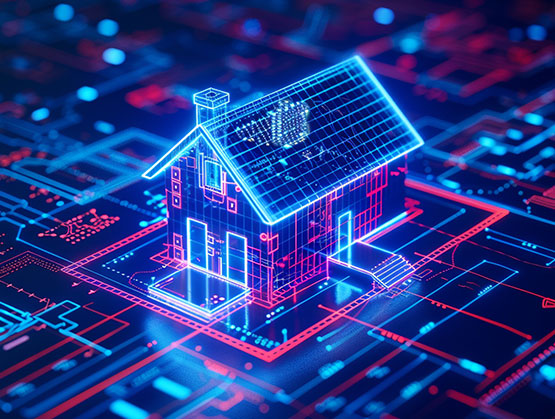A backplane PCB is a specialized type of circuit board typically located at the back or bottom of electronic devices, designed to support and connect various electronic components and subsystems. Unlike regular PCBs, backplane PCBs exhibit higher levels of complexity to accommodate numerous connectors, slots, and other interconnecting devices. They are also built with enhanced durability and stability to meet the demanding environments of electronic equipment.
Backplane PCB designs often take into account high-speed signal transmission, power distribution, thermal management, and EMI/EMC (Electromagnetic Interference/Electromagnetic Compatibility) to ensure the stability and reliability of electronic devices. These PCBs can be single-layer, double-layer, or multi-layer structures, depending on the requirements and complexity of the equipment.
Primary Functions of Backplane PCBs
1、Mechanical Support:
Backplane PCBs provide a solid foundation, offering mechanical support and stability for internal components of electronic devices.
2、Electrical Connectivity:
These PCBs feature intricate wiring networks connecting various electronic components, chips, modules, and other devices, enabling electrical connections and communication within the device.
3、Signal Transmission:
Backplane PCBs are responsible for transmitting high-speed signals and data, ensuring fast and stable communication between components, thereby supporting the overall operation of the electronic device.
4、Power Distribution:
They manage and distribute power, ensuring stable and reliable power supply to all components, meeting the device's power consumption needs.
5、Thermal Management:
Backplane PCBs handle heat conduction and dissipation, helping to effectively dissipate heat within the device, preventing overheating and potential damage to electronic components.
6、EMI/EMC Control:
The design of backplane PCBs considers factors related to electromagnetic interference and compatibility, implementing measures to minimize external interference and ensure device stability and reliability.
Characteristics and Advantages of Backplane PCBs
1、Maintainability:
Backplane PCBs are designed for easy maintenance and repair, featuring modular designs and standard interfaces. For example, industrial control system backplanes use modular designs allowing for quick replacement of faulty modules, reducing downtime and repair costs.
2、Enhanced Stability:
High-quality materials and advanced manufacturing techniques ensure the stability and reliability of backplane PCBs, allowing them to perform well in harsh environments. Military-grade backplanes, for instance, use high-reliability materials and processes, undergoing rigorous testing and validation to ensure stability and reliability in battlefield conditions.
3、Assemblability:
The design of backplane PCBs considers the need for assembly and integration with other components, allowing flexible combinations to meet various design requirements. For example, industrial automation backplanes can be combined with sensors and actuators to achieve complex control functions.
4、High-Density Capability:
With excellent high-density wiring capabilities, backplane PCBs can manage extensive signal transmission and processing within limited space, meeting modern electronic devices' demands for high data transmission speeds and processing power. Server backplanes, for example, employ high-density wiring designs to facilitate high-capacity data transmission and processing.
5、Functionality:
Backplane PCBs can integrate multiple functions and communication interfaces to meet diverse functional requirements. Industrial control system backplanes, for instance, integrate various communication interfaces and control functions to achieve complex control and monitoring capabilities.
Manufacturing Focus for Backplane PCBs
1、Material Selection and Thickness Control:
Backplane PCBs are generally thicker and heavier than standard PCBs, necessitating stringent material selection and thickness control. Choosing appropriate base materials and copper cladding, such as FR-4, FR-5, and high-TG laminates, and strictly controlling the board thickness helps ensure mechanical strength, thermal stability, and electrical performance. Additionally, matching the thermal expansion coefficients of materials is crucial to avoid deformation or stress concentration during temperature changes, maintaining circuit stability and reliability.
2、Layer Alignment:
Given the multiple layers and numerous drill holes in backplane PCBs, layer alignment is a critical manufacturing technology. High-precision lamination techniques and advanced alignment equipment are used to ensure alignment accuracy and stability.
3、Special Process Handling:
Manufacturing backplane PCBs involves special processes such as chemical copper plating, surface treatment, lamination, drilling, and electroplating. Strict control of these processes is necessary to ensure the quality and stability of the backplane.
4、Thermal Management and Heat Dissipation Design:
Due to their thickness and weight, managing heat dissipation is a key concern in backplane PCB manufacturing. Implementing heat sinks, thermal pads, fans, and heat pipes, and selecting appropriate heat dissipation materials like copper, aluminum, and thermal gels can enhance thermal efficiency. Additionally, thermal simulations and testing are conducted to evaluate the effectiveness of thermal designs, ensuring stability and reliability.
5、Process Monitoring and Quality Control:
Rigorous process monitoring and quality control throughout the manufacturing process are essential to ensure that each step and component meets design requirements and standards. Detailed manufacturing process specifications, regular maintenance, and calibration of production equipment, strict control of process parameters, real-time monitoring, and adjustments during manufacturing, along with thorough inspection and testing of raw materials, processes, and finished products, help ensure the stability and reliability of the manufacturing process and the quality of backplane PCBs.

Contact: Wing
Phone: +852 21386086
E-mail: sales@fwpcb.com
Whatsapp:+86 199 2764 2527
Add: Unit 3, 6/F., Kam Hon Industrial Building,8 Wang Kwun Road, Kowloon Bay, Hong Kong
We chat
